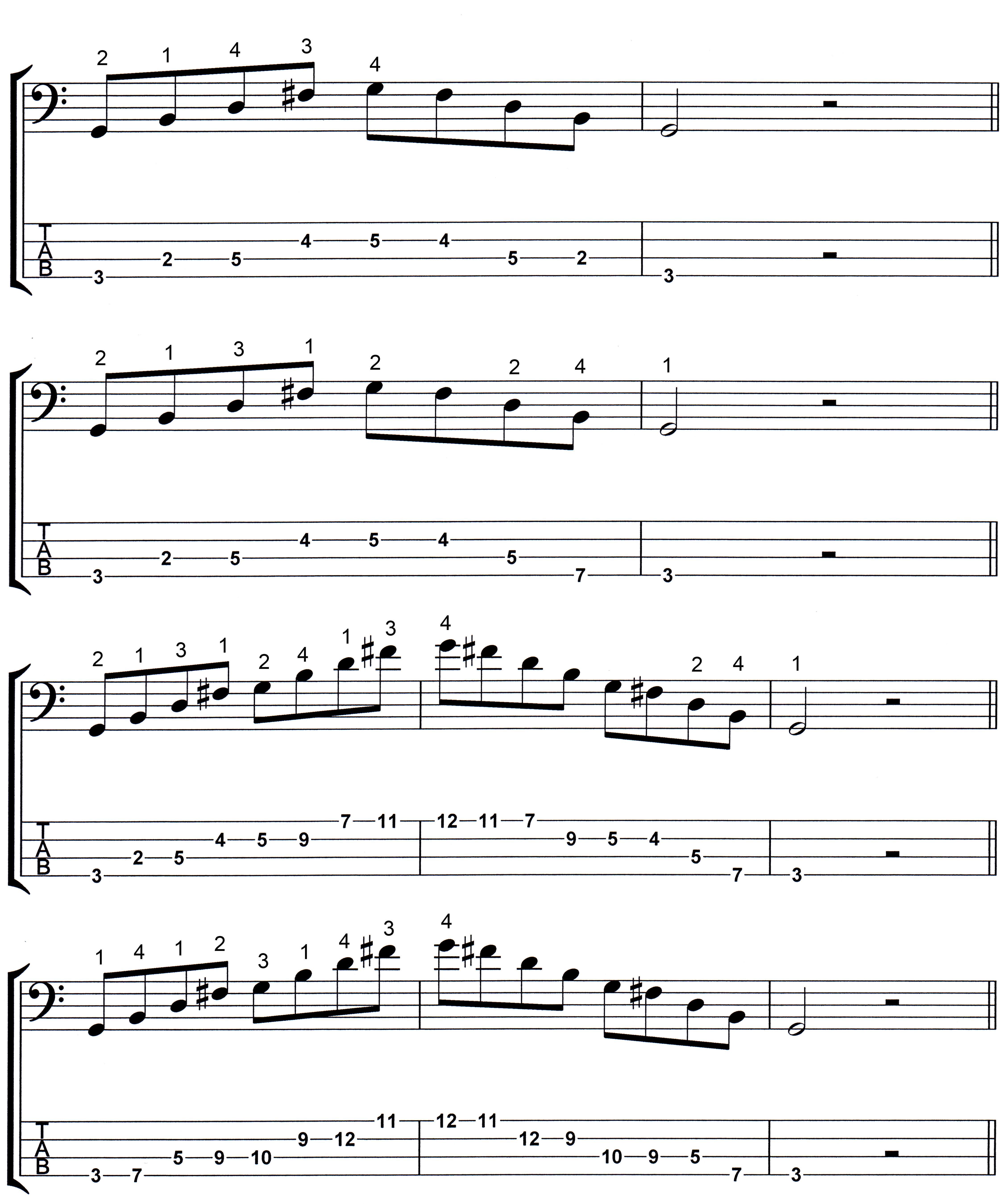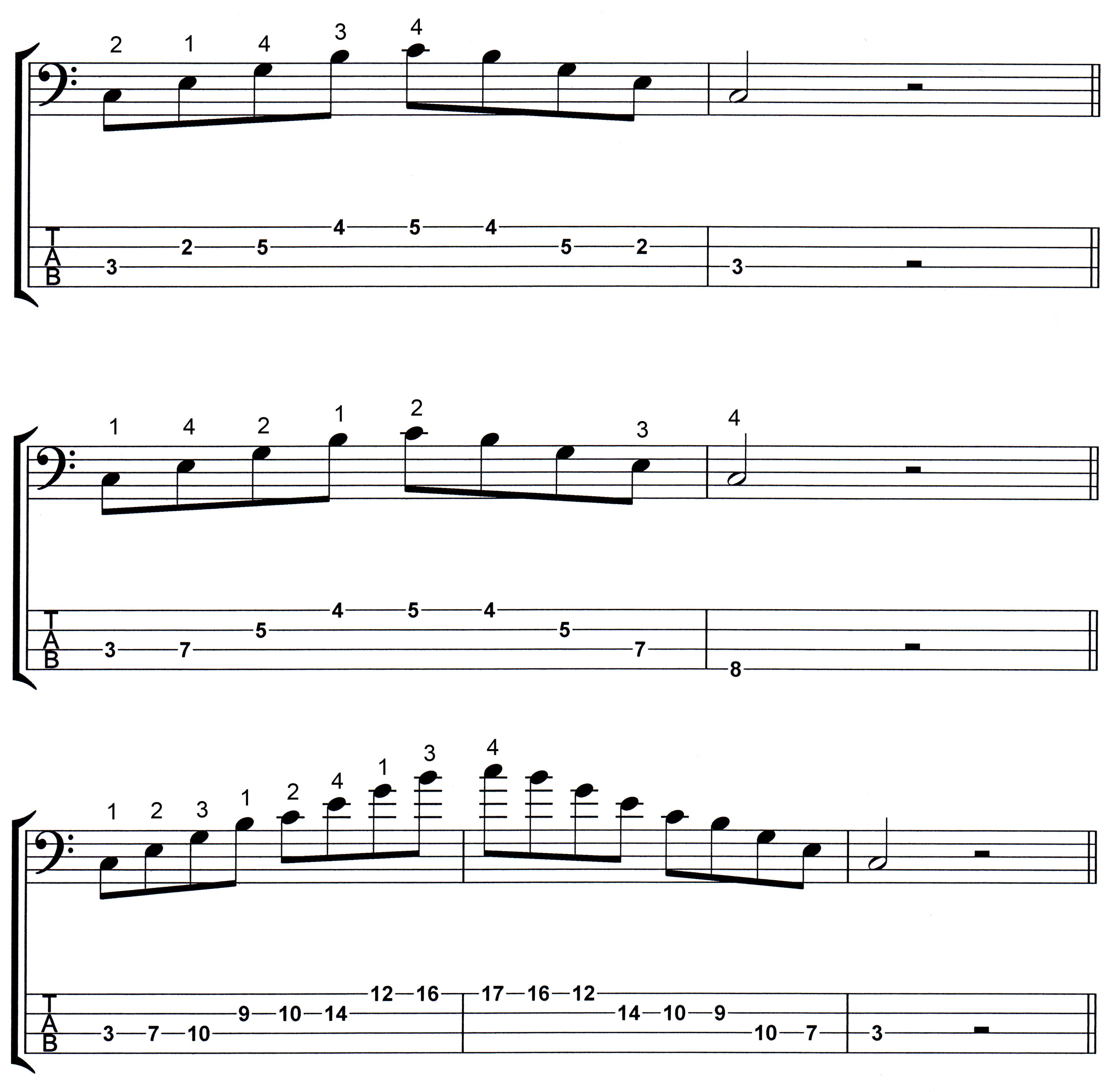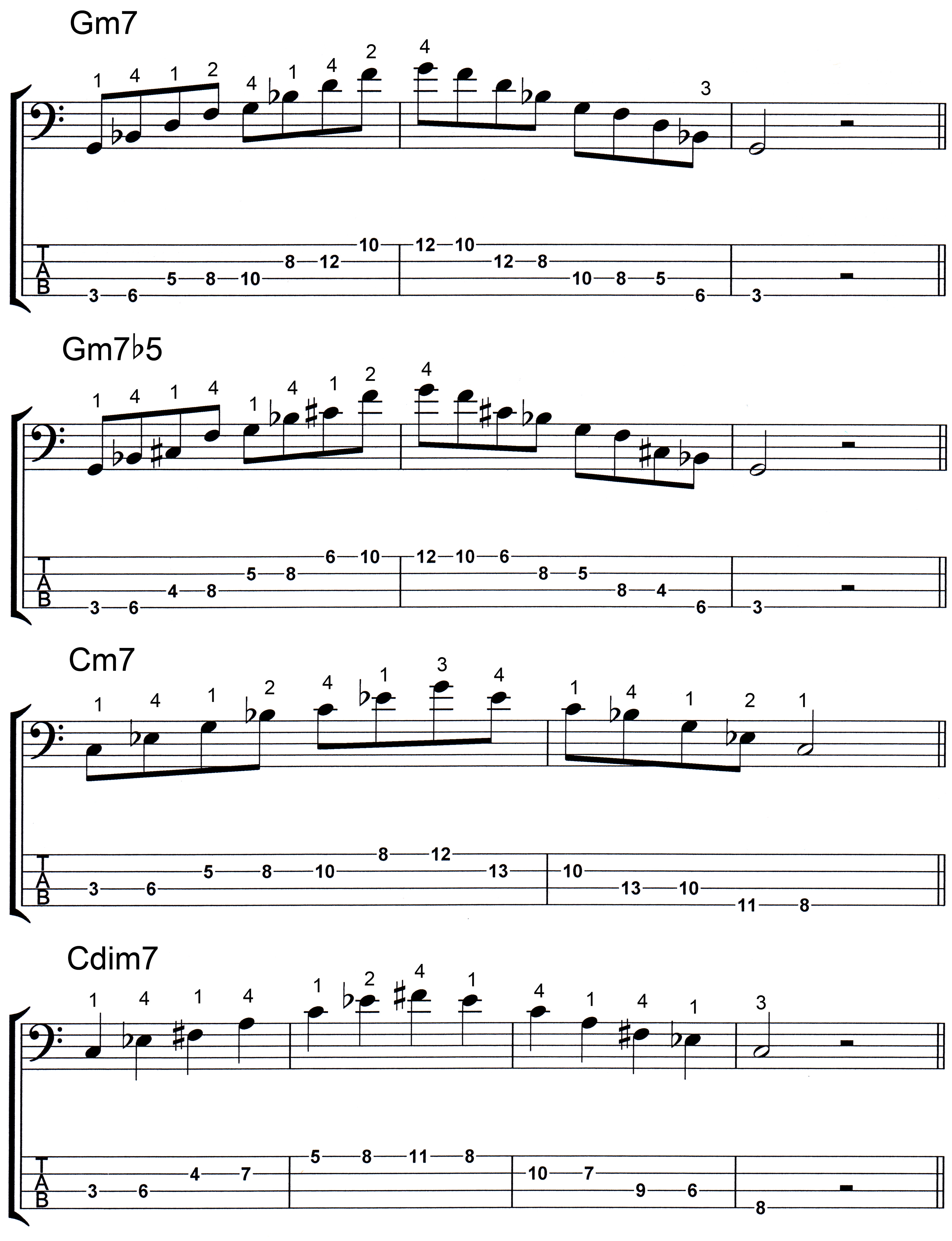
How To Practice Chord Patterns, Part Two
In the previous column we began to break down how to practice playing chords. Understanding chords, as mentioned before, is critical to improving and expanding your creative potentials. While some songs benefit from the straight eighths on the root, a lot of songs will benefit from going beyond the rudimentary "holding down the bottom" that is so prevalent in a lot of music that would have benefited from more creative efforts in the bass parts.
In this second part, we continue outlining chord shapes beyond simple minor and major forms.
Let's start with a common voice in the Major chord family, the major 7 (1, 3, 5 and 7). So in the key of G, you will be looking at the following notes: G, B, D, F#. We are rooted on the 4th string for this exercise.
In the graphic below are four ways to practice playing this chord, beginning with a simple outline, then moving into including vertical execution. Continue following fingerings as you are able.
Take it slow; learn the patterns and fingerings. Then add the metronome at around 72 bpm to begin. Add only 2-4 bpm at a time, adjust preserve technique before advancing to higher tempos. Never leave
your technique behind for the sake of speed.

As you can see, these patterns are really not much different than what you learned previously. We're just adding the major 7 tone to the chord.
Alright, the second graphic shows three examples of the Major 7 chord rooted on the 3rd string in the key of C (C/1, E/3, G/5 B/7). This series of patterns is a bit more
limited, but equally important. It also includes a vertical example as well. Make sure to play through each pattern in all 12 keys.

For all the above examples, convert the 7 tone to a b7 to create a dominant 7 chord, and repeat the whole process playing this chord form.
The following graphic shows a few different chords to give you a broader sense of what is possible. Learn these in every iteration possible, then move them through every key.

Once again, what we are giving you here are just examples of the possibilities. This is merely a starting point to stimulate ideas in your thinking, on how things can be done, how parts can be played.
And, of courses, the fingerings will be subjective, based on your physiology. Adjust as you need - and justify the changes. Don't just play them whatever way you feel like playing. Everything should be deliberate and intentional - and repeatable, to create a consistent approach to whatever it is you are doing.
One last point to make here. The previous lesson and this lesson contain chord patterns you really need to have fully memorised. And as mentioned, you should be able to play them in all twelve keys, everywhere on the fret board. You will not do this overnight, or in a week, perhaps even a month. And that's fine. We all memorise things differently and at different rates. What is important is that you keep at it and get this information integrated in your thinking, incorporated in your playing. That way, you won't forget it. When you use information, it stays with you and becomes more readily accessible the more you use it, and the better you know it.
So don't give up. Make this a part of what you are, who you are, as a bass player - more than just a thumper, able to add beautiful melodic elements to music where it is needed. That will make you more valuable to any band. And if you're looking at professional level gigs, this will separate you from the crowd.
Okay, that's it for this session. Just remember to take your time. Once you have it pretty well in hand, see how you can adapt the songs you're playing to include this approach where it can benefit the song in question.
Next time!